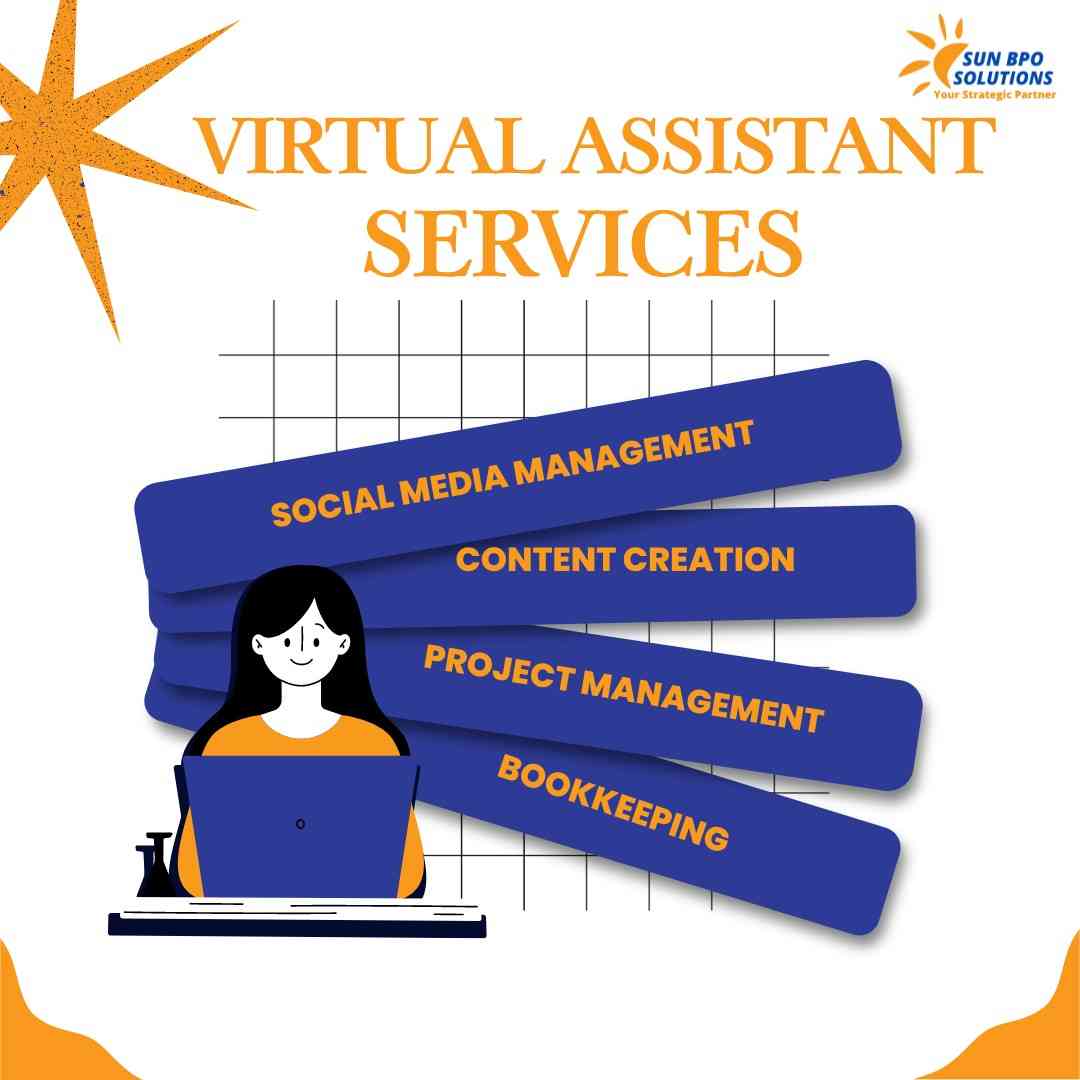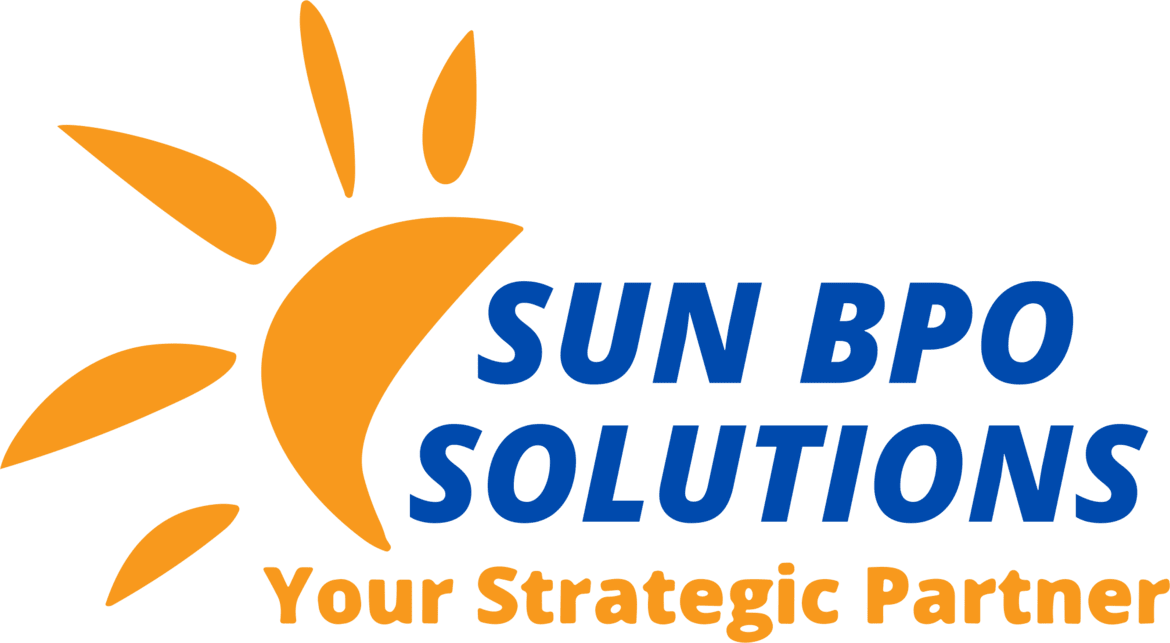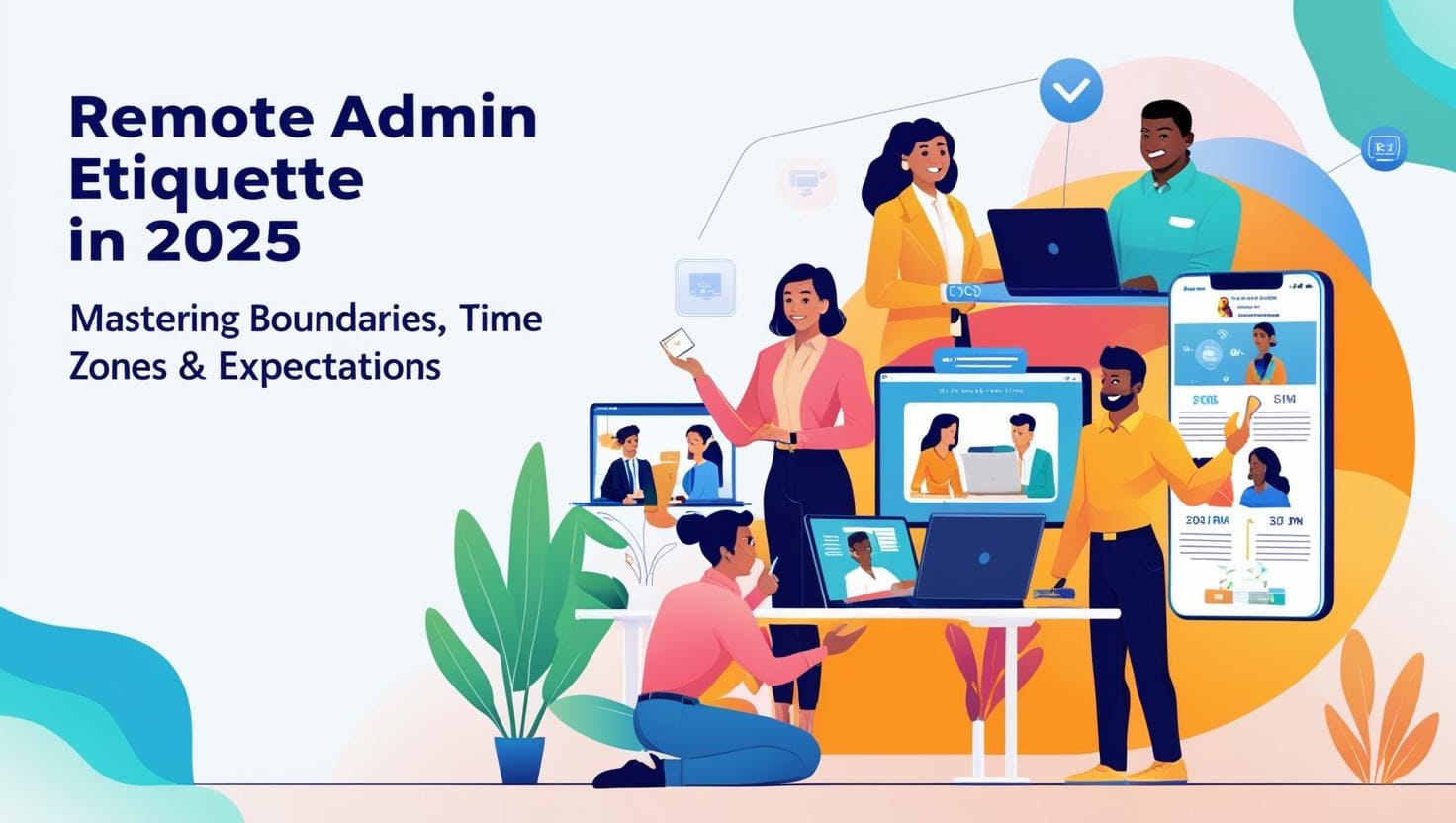Table of Contents
Introduction
In today’s hybrid and remote-first workplace, virtual administrative roles are more vital than ever. But with the convenience of working from anywhere comes a new set of challenges: how do you manage boundaries, juggle global time zones, and meet expectations—without burning out?
Welcome to the world of remote admin etiquette, where success isn’t just about getting things done—it’s about doing them professionally, respectfully, and efficiently across screens, borders, and schedules.

What Is Remote Admin Etiquette?
Remote admin etiquette refers to the set of unwritten rules and best practices that remote administrative professionals follow to ensure smooth collaboration, clear communication, and mutual respect with clients, teams, or executives—especially when working asynchronously.
This includes:
- Respecting work-life boundaries
- Mastering time zone coordination
- Setting realistic expectations
- Maintaining professional tone online
- Prioritizing responsiveness without overworking
- Following professional remote work etiquette and remote meeting etiquette to ensure virtual interactions are respectful and productive
🔑 Why Etiquette Matters in Remote Admin Roles
A virtual admin professional often serves as the backbone of communication, scheduling, and operational organization for teams and executives. Etiquette becomes crucial because:
- There’s no face-to-face interaction to fix misunderstandings
- Time zone differences can cause frustration if unmanaged
- The lack of physical oversight requires built-in trust and clarity
- Professionalism and boundaries can make or break long-term partnerships
- Following proper remote work etiquette helps maintain clarity and engagement
Key Elements of Successful Remote Admin Etiquette
✅ Boundary management is critical in virtual workspaces. Admins often feel pressure to be “always available,” but this quickly leads to burnout and decreased productivity.
Best practices:
- Communicate your working hours clearly in your onboarding email
- Use tools like Google Calendar or Slack status to show availability
- Avoid checking or replying to non-urgent messages after hours
- Set up automated “out of office” responses when offline
- Be mindful of client or team preferences—some may prefer email over instant messages for non-urgent requests
💡 Tip: Establish a shared communication agreement with clients or teams during onboarding.
✅ If you’re working with clients in different regions, mastering time zone etiquette is essential for smooth operations and respectful communication.
Time zone tips:
- Use tools like World Time Buddy or Google Calendar’s time zone view
- Schedule recurring tasks or meetings in advance with mutual input
- Be clear when suggesting a time (“10 AM EST / 7 AM PST”)
- When urgent issues arise, consider the recipient’s local time before sending
Working with clients in different time zones means you must be strategic with your availability windows and response expectations.
💬 Pro Tip: Include your time zone in your email signature or Slack profile.
✅ A huge part of remote admin etiquette is setting and managing realistic expectations—especially when working asynchronously.
How to do this well:
- Define response times (e.g., “within 24 hours on weekdays”)
- Clarify task deadlines and deliverables
- Use shared dashboards like Trello, Asana, or ClickUp to track progress
- Send recap emails after meetings to ensure alignment
- Proactively notify teams if you’re running behind or need input
🔍 This is where virtual assistant time management shines. Managing tasks with clarity builds confidence and reduces friction.
Tools That Help You Stay Professional and Polished
Whether you’re a freelance VA or part of a remote admin team, these tools can help maintain etiquette and efficiency:
- Calendly – for scheduling across time zones
- Slack + Clockwise – to show real-time availability
- Trello or Asana – for clear task tracking and collaboration
- Grammarly – for polished communication
- Loom – for quick video messages when synchronous chats aren’t possible
Using these tools shows that you value your time—and others’.
📈 Benefits of Practicing Good Remote Admin Etiquette
| Etiquette Practice | Positive Outcome |
|---|---|
| Respecting Boundaries | Reduces burnout and enhances work-life balance |
| Time Zone Awareness | Builds trust and improves collaboration |
| Clear Expectations | Avoids miscommunication and delays |
| Professional Communication | Enhances your brand as a remote admin |
| Remote Meeting Etiquette | Keeps virtual meetings efficient and focused |
Future Vision: Remote Work Etiquette in the Evolving Admin Landscape
As the world embraces hybrid and fully remote models, remote work etiquette will become a core skill, not just a soft one. From AI-driven scheduling assistants to automated communication tools, remote admins will need to combine technical agility with emotional intelligence. In the future, remote professionals who understand digital boundaries, cultural nuances, and collaboration etiquette will lead more strategic roles—transforming from virtual assistants into remote business enablers. Adopting proper etiquette today sets the foundation for career growth and client trust tomorrow.
Key Factors That Improve Remote Work Etiquette
Final Thoughts
Mastering remote admin etiquette is more than a professional skill—it’s a competitive edge in today’s digital economy. By setting healthy boundaries, understanding global time zones, and aligning expectations, you don’t just get things done—you build trust, loyalty, and long-term success.
Remember: being remote doesn’t mean being out of touch. In fact, with the right etiquette, you can be more connected, efficient, and respected than ever before.
Share your thoughts in the comments! 🚀
Stay updated with SunBPO Solutions for the latest trends, insights, and strategies to keep your business ahead of the curve!
Frequently Asked Questions (FAQs)
How do I handle urgent client requests after hours?
Set up a system for true emergencies, like a designated email or number. Otherwise, reinforce boundaries gently in your availability message.
How do I maintain professionalism in remote communication?
Use polite greetings, avoid slang or emoji overload, and always confirm understanding with a quick recap or checklist.
What are typical administrative duties and responsibilities in a remote role?
Tasks can include calendar management, travel planning, inbox sorting, document preparation, and CRM updating—just like in traditional administrative jobs remote.





0 Comments